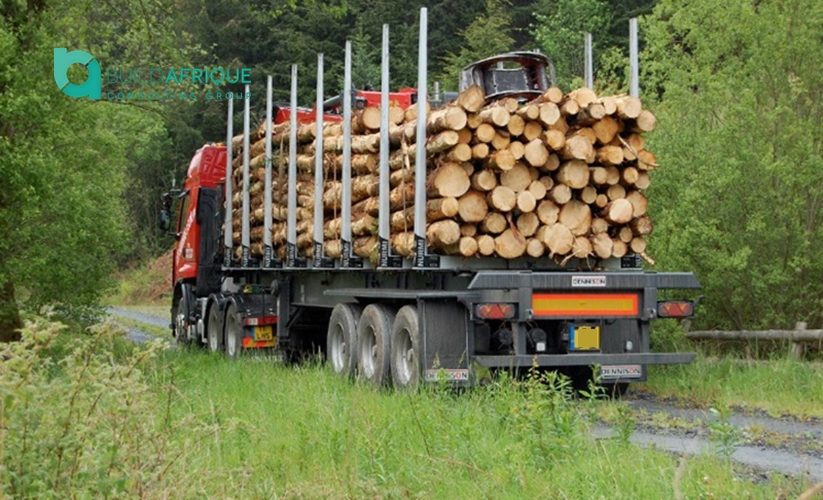The growth of attention on the timber industry, over the course of 2018 has resulted in a range of issues for Kenya. When the nationwide logging ban was implemented in an aim to protect the fast depleting forests earlier in the year, the producer price of wood and related products rose by 24 percent driving up consumer prices. The upsurge coincided with a three-month ban on harvesting of trees in private, public, and community forests that are said to be facing extinction due to human activity. Traders came out asking the government to reconsider the ban and allow them to recover their investments as some had unfulfilled agreements with the Kenya Forest Services (KFS). Although the ban has since been lifted to allow commercial tree growers to conduct the trade, the prices of wood products are still high due to limited supply. Furthermore, the police cannot differentiate sources of timber, and as such, the ban affects even those harvesting their own trees. According to the Kenya National Bureau of Statistics, the disruption has over the past one year triggered price increases of 36.18 and 11.73 percent for timber and furniture products respectively. On the other hand, KFS reports that the ban directly affected in excess of 1.5 million people who depend on forest resources.
While this was taking place, the National Treasury, through a budget proposal, increased import tariffs for raw materials and semi-processed wood based-panel products to 35 percent down from 25 percent. While the taxes are meant to protect the local industries, this specific tax increase gives foreign companies an instant advantage over local production as imported goods now have a 30 percent cost advantage over similar good produced locally. As expected, the move was condemned by various stakeholders. The Kenya Association of Manufacturers (KAM) revealed their worries over the future of the local timber industry noting that increased taxation would slow growth of the struggling sector and hurt its ambition to generate 800,000 jobs by 2022. The tax beats logic at a time when the nation is trying to deal with the problem of unemployment. It is also against the efforts to build a vibrant manufacturing sector and actualization of affordable housing.
According to KAM, the taxes provide an incentive for traders to ship in ready-made furniture as local materials are deemed expensive, and  as a result, intensify the growth rate of such trade which is currently at 22 percent, against the local 7 percent compounded growth rate. It will also distort the value chain as the increase in imported furniture will decrease the portion of value addition. The association also argued that in all likelihood, the policy would encourage furniture manufacturers to outsource production offshore.
as a result, intensify the growth rate of such trade which is currently at 22 percent, against the local 7 percent compounded growth rate. It will also distort the value chain as the increase in imported furniture will decrease the portion of value addition. The association also argued that in all likelihood, the policy would encourage furniture manufacturers to outsource production offshore.
With the restriction on logging and rise of duties on imported medium- density fibreboard (MDF), somebody ought to have predicted an instant deficiency of materials in an industry that bolsters micro, small, and medium enterprises. Besides, any deliberate interruptions should be least expected in a country whose unemployment levels are high.
What solutions should we, therefore, be looking at to sustain price advantage to the consumer? First, the local entrepreneur should be equipped with the ability to build a sustainable competitive advantage. In attempting to re-stock the woodlands, the legislature ought to have considered alternative sources of cheap raw materials and also setting up a legitimate administrative structure to urge agric-preneurs to consider growing regularly utilized wood like eucalyptus and cypress. This would likewise give a chance to innovate around manufacture of MDF out of quickly developing trees like Grevillea robusta. The expanded spending on TIVETs should join forces with government agencies to build up an exhaustive supply-chain and value-addition network of timber and related products in Kenya. Along these lines, we can contain cost and increase value. This will contribute to the alleviation of the huge spending that necessitates high taxes, at the expanse of local economic growth.
This article is written by Buildafrique Consulting Group; a Kenya Real Estate Consultant and Development Solutions provider that offers End-to-End Financial, Development Management, and Investments Solutions in Real Estate, to allow Developer, Investors, and prospective Home Owners manage risks and realize value for their investments in a fast-evolving Real Estate market.
Contact Us today for Solutions to your Challenge in Real Estate Investments and Project Development:
- Email: [email protected]
- Tel: +254 722 474285 / + 254 20 8058493
- Website: www.buildafrique.com


